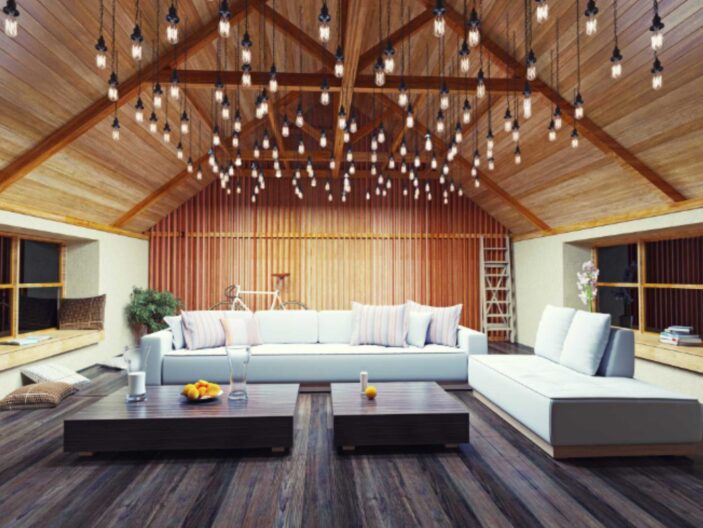Have you ever considered transforming your unused attic space into a functional living area?
We explore the world of loft conversions and why they are becoming increasingly popular among homeowners.
From increasing living space to adding value to your home, there are numerous benefits to converting your loft.
We discuss the different types of loft conversions, essential design considerations, and important factors to keep in mind throughout the process.
If you are thinking about embarking on a loft conversion project, keep reading to learn more!
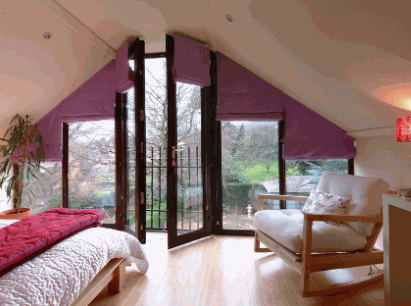
What Is A Loft Conversion?
A loft conversion is a process of transforming an underutilized attic or loft space into a functional and livable area that can be used for various purposes like an extra bedroom, home office, or even a stylish bathroom.
One of the key benefits of a loft conversion is that it provides additional living space without the need for a costly house extension. This type of transformation allows homeowners to maximize the potential of their property by creating a new room or area from the existing space.
The process typically involves structural changes, insulation, flooring, lighting, and sometimes even plumbing and heating installations to make the space habitable. Planning permission may be required depending on the extent of the conversion and local regulations.
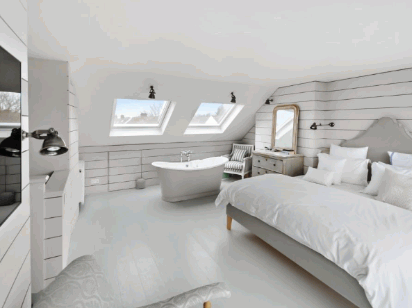
Why Should You Consider A Loft Conversion?
Considering a loft conversion can be a strategic decision for homeowners looking to maximize their living space, increase the value of their property, and utilize existing areas more efficiently, all while potentially avoiding the complexities of moving, as suggested by experts like Grant Sneddon.
Increase Living Space
One of the primary reasons to consider a loft conversion is to increase your living space, whether it be for an additional bedroom, a dedicated home office, or a play area for the kids.
Additional space from a loft conversion can also be utilized in a variety of other ways to cater to different family needs. For example, parents may choose to create a cozy reading nook for some quiet moments, or a spacious walk-in closet to keep their wardrobe organized. Teenagers might benefit from a chill-out zone with a gaming setup or a study area for their academic needs. For families with younger children, the extra space can be transformed into a fun playroom with storage solutions for toys and games.
Add Value To Your Home
Adding a loft conversion can significantly increase the value of your home, making it a smart financial investment according to many real estate agents.
According to recent studies, a loft conversion can increase the value of a property by up to 20%. This means that if you were to sell your house after the conversion, you could potentially earn a significant profit. The cost of a loft conversion is often lower than moving to a bigger property, making it a cost-effective way to add space and value to your home. Many homeowners choose to finance their loft conversions through loans or equity release, seeing it as a long-term investment that will pay off in the future.
Avoid The Hassle Of Moving
A loft conversion allows you to avoid the hassle and expense of moving by creating additional space within your existing home.
Not only does this save you the stress of packing and relocating, but it also preserves the sentimental value and familiarity of your current living space. This means you can enjoy the benefits of a larger home without the disruption of starting anew somewhere else. By opting for a loft conversion, you can personalize the new space to fit your exact needs and style, ensuring that it becomes a seamless extension of your existing home.
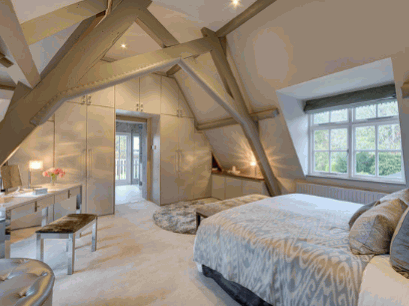
Types Of Loft Conversions
There are several types of loft conversions that homeowners can choose from, including dormer conversions, mansard conversions, hip-to-gable conversions, and Velux conversions, each offering unique benefits and design options as explained by Syte Architects.
Dormer Conversion
A dormer conversion involves extending the existing roofline to create additional floor space and headroom, often incorporating interesting cladding for an enhanced external appearance.
These types of conversions are popular among homeowners looking to increase living space without changing the overall footprint of their property. By adding dormer windows, more natural light can flood into the newly created room, making it feel brighter and more spacious.
- There are various design options for dormer conversions, from traditional gable-fronted dormers to modern flat-roofed ones, allowing homeowners to tailor the look to their preferences.
- Dormer conversions can add value to a property, as they provide a functional and visually appealing extension that enhances both the interior and exterior.
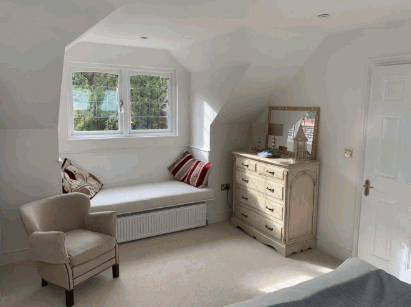
Mansard Conversion
Mansard conversions significantly alter the roofline to create a large and uniform living space, making the most of the available dimensions and often requiring detailed planning approval.
By transforming the steeply sloped roof into a nearly vertical façade, a mansard conversion not only enhances the aesthetic appeal of the property but also maximizes the usable interior space.
This alteration typically involves adding dormer windows, which not only bring in natural light but also increase headspace in the upper level. This change can lead to a more versatile living area, allowing for extra rooms, storage, or even loft living spaces with an abundance of natural daylight.
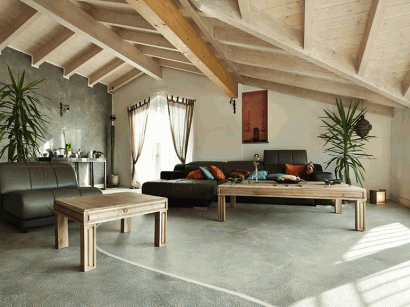
Hip-To-Gable Conversion
Hip-to-gable conversions involve extending the side of the roof to create a vertical ‘gable’ wall, increasing both floor space and headroom while enhancing the external appearance of the property.
By changing the sloping side of the roof to a straight vertical wall, this conversion creates a more usable and aesthetically pleasing living space. The process typically involves removing the existing hip rafters and adding a gable end wall, which opens up the attic area for potential conversion into functional rooms, such as bedrooms or home offices. This transformation not only adds immediate square footage to your home but also increases its value and appeal for potential buyers in the future.
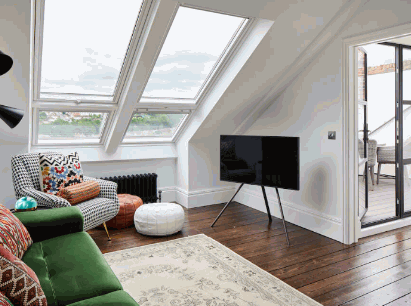
Velux Conversion
A Velux conversion involves installing Velux windows or roof lights to bring natural light into the loft space without altering the existing roof structure.
One of the key advantages of Velux conversions is the simplicity of the process and the significant benefits they offer. By incorporating Velux windows or roof lights, homeowners can transform their dark and unused loft spaces into bright and airy rooms filled with natural light. Not only does this enhance the aesthetics of the space, but it also helps create a healthier and more inviting living environment. The installation of Velux windows is relatively straightforward, making it a cost-effective way to add value to your home.
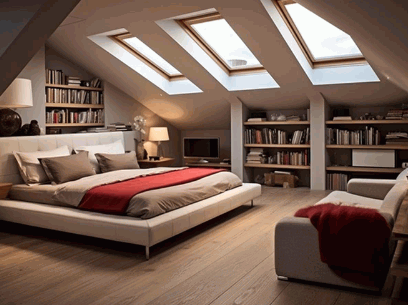
Designing Your Loft Conversion
Designing your loft conversion involves careful planning to optimize the available space, create a functional and aesthetically pleasing layout, and ensure that the final design meets your needs and expectations.
Assess Your Space
Before starting a loft conversion, it’s essential to assess the existing space, including dimensions and headroom, to determine the feasibility and planning requirements.
A thorough space assessment lays the foundation for a successful loft conversion project. Understanding the existing space is crucial as it guides decisions on design, layout, and structural considerations. Factors such as natural light, ventilation, and access points play a vital role in shaping the final outcome.
Evaluating the structural integrity and load-bearing capacity of the space is paramount for safety and compliance with building regulations. Space assessment helps in identifying any potential obstacles or modifications needed to achieve the desired functionality and aesthetics.
By conducting a comprehensive evaluation upfront, designers and contractors can anticipate challenges, streamline the planning process, and ensure that the final design meets the client’s expectations and requirements.
Consider Your Budget
Considering your budget is a crucial step in planning a loft conversion, as it will influence the scope of the project, the choice of materials, and the selection of a contractor.
Managing your finances effectively during a renovation project involves calculating the costs of permits, labor, and unforeseen expenses. Prioritize your spending by focusing on essential structural elements first and allocating funds for design elements later on. Researching different contractors and obtaining multiple quotes can help in finding a balance between quality work and cost efficiency. Opting for durable yet affordable materials can also make a significant difference in the overall cost without compromising on the end result.
Choose The Right Contractor
Choosing the right contractor is essential for ensuring that your loft conversion is completed professionally, on time, and within budget.
When selecting a contractor, look for qualifications like proper licensing, insurance, and certifications that demonstrate their expertise. It’s vital to assess their experience in projects similar to yours to ensure they have the necessary skills to handle your specific needs. Don’t underestimate the value of references from past clients – these testimonials offer insight into the contractor’s work ethic and reliability.
Remember, a key aspect of a successful project lies in thorough planning. Define your project goals, set a realistic budget, and establish a timeline.
Clear communication is paramount throughout the process. Ensure that expectations, timelines, and budget constraints are well-communicated and agreed upon by both parties to prevent misunderstandings and delays. By following these tips, you can make an informed decision and set the stage for a successful loft conversion project.
Obtain Necessary Permits
Obtaining the necessary permits from local authorities is a vital step in the loft conversion process to ensure compliance with building regulations and planning laws.
There are different types of permits that one may need to obtain before starting a loft conversion project, such as planning permits, building permits, and possibly even permits for plumbing and electrical work. Each type of permit serves a specific purpose and ensures that the project meets safety and quality standards.
The application process for permits can vary depending on the location and size of the project. It typically involves submitting detailed plans, paying application fees, and waiting for approval from the relevant authorities. It’s essential to follow the guidelines and provide all the necessary documentation to avoid delays in the permitting process.
Compliance with local building regulations is crucial to ensure that the loft conversion is done safely and legally. Non-compliance can lead to fines, delays, or even the need to dismantle the work done. By obtaining the required permits and adhering to regulations, homeowners can enjoy their newly converted loft with peace of mind.
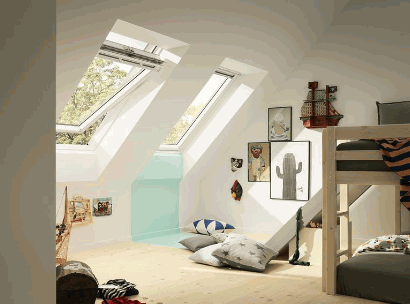
Important Factors To Consider
When planning a loft conversion, there are several important factors to consider, including head height, floor space, insulation, ventilation, lighting, electrical points, and staircase design, all of which can significantly impact the final outcome of your project.
Head Height And Floor Space
Ensuring adequate head height and floor space is essential for a comfortable and functional loft conversion, and careful planning can help maximize these dimensions.
One crucial factor to consider when converting a loft is the minimum head height requirements, typically around 2.2 meters, to ensure the space is usable and complies with building regulations. There are various methods for increasing headroom, such as lowering the floor below or raising the ridge of the roof. Opting for a dormer or mansard extension can also provide additional headspace. To optimize floor space, consider built-in storage solutions, multifunctional furniture, and clever layout designs that make the most of every available inch.
Dig deeper: What Is The Minimum Ceiling Height For A Loft Conversion
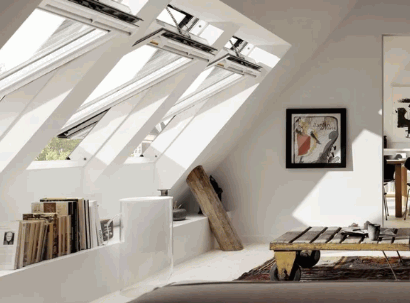
Staircase Design
The design and positioning of the staircase are crucial aspects of a loft conversion, influencing both the layout and the amount of usable space in the loft.
Staircases not only serve as functional connectors between different levels of a home but also contribute significantly to its overall aesthetic appeal. When planning a loft conversion, the right staircase design can enhance the flow of the space and make it more visually appealing.
Choosing the appropriate style of staircase that complements the existing architecture of the house is essential. Whether you opt for a traditional spiral staircase, a sleek floating staircase, or a space-saving alternating tread design, each style brings its unique charm and functionality to the space.
- A spiral staircase, for instance, is perfect for small spaces where a more compact design is required, while a floating staircase creates a sense of lightness and modernity.
- Alternatively, an alternating tread staircase provides a practical solution for maximizing space efficiency without compromising on safety.
Insulation And Ventilation
Proper insulation and ventilation are key to ensuring the loft space is comfortable and energy-efficient, requiring careful planning and selection of materials.
In terms of insulation, there are several options to consider, such as fiberglass, spray foam, and cellulose insulation. Each type has its own advantages, with fiberglass being cost-effective, spray foam providing excellent air-sealing properties, and cellulose offering high thermal resistance.
Ventilation systems play a crucial role in maintaining indoor air quality and preventing moisture buildup. Installing roof vents, soffit vents, or a ridge vent can help regulate temperature and humidity levels in the attic space. Integrating these insulation and ventilation systems seamlessly into the overall loft conversion plan is essential for creating a functional and comfortable living area.
Lighting And Electrical Points
Effective lighting and strategically placed electrical points are essential for creating a functional and inviting loft space, requiring thoughtful planning and design.
In terms of lighting options in a loft space, considering the use of natural light can greatly enhance the ambiance and energy efficiency of the area. Windows and roof lights play a crucial role in bringing in natural sunlight, creating a bright and airy atmosphere. Natural light not only reduces the dependency on artificial lighting sources but also provides a connection to the outdoors, making the space feel more open and inviting.
